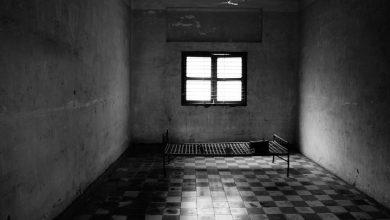#770: Clarification on the Hadith of letting down the Garments below the Ankles
770 QUESTION
“Assalamu alaikum warahmatullahi wabarakātuhu, please my question goes like this : the hadith of Abu hurairah ” That which passes the ka’abai in the wear of a Muslim the rest is in the fire. How authentic it is because it you to confuse me you will see those claiming to be very religious but their trousers passes there ka’abain”
ANSWER:
Wa Alaykum Salām Warahmatullāh Wabarakātuh
Alhamdulillāh.
Imam Ahmad has recorded in his Musnad and Abū Dāwud in the Sunan that the Rasūl -salallāhu alayhi wasallam – said:
إزرة المؤمن من إلى أنصاف ساقيه لا جناح عليه ما بينه وبين الكعبين، وما أسفل من الكعبين في النار، يقول ثلاثاً: لا ينظر الله إلى من جر إزاره بطراً
“The lower garment of a Believing man ranges from between half his shank to his ankles, there is no blame on him within that. And whatsoever goes below the ankles lies in the Fire. He said three times: Allāh does not look unto he who drags his lower garment out of arrogance”
A similar Hadith was recorded by Imām Al-Bukhārī in the Sahih.
Imām Al-Khattābī – rahimahullāh – said in his Commentary of this Hadīth:
“He means that the places which has the Lower garment below the ankles will be in the Fire but he named the place the undergarment itself.”
What the Imām implies is that the feet of the one who does this will be punished with the fire on the Day of Qiyāmah.
May Allāh protect us from this.
But Imām Ibn Hajar Al-Asqalānī – rahimahullāh – mentioned in the Fat’h that there is no blame in interpreting the Hadīth as that the lower garment is in the Nār itself.
This, he said would be by way of implying the severity of the punishment that the doer can face for if the lower garment itself may be in Nār, then the feet that had it is in more risk of been in Nār.
We ask Allāh to protect us from that.
Please note that in the above, what we mean by Undergarment or Lower Garment is what is worn to cover the lower limbs whether a trouser, a wrapper or the long gown that covers from the shoulders to the lower limbs, and Allāh knows best.
Then, as regards Isbāl (flowing the garments below the ankles), the Ulamā differed regarding it’s ruling.
The first position, which is the position of the majority, that the punishment attached to Isbāl relates only to the one who does it out of pomposity, arrogance or pride. Of those who helped this position are Imām Ahmad, Ash-Shāfi’ī, Al-Bājī and An-Nafrāwī among the Mālikiyyah.
Imām Shihābuddin Ar-Ramlī, Zakariyyah Al-Ansārī, Yahya An-Nawawī, and Ibn Hajar Al-Haytamī Ash-Shāfi’ī among the Shāfi’ī Imams.
And among the Hanbalī Imams, some of those that held this position include Ar-Ruhaybani, Al-Mardāwī, Ibn Al-Muflih, Ibn Qudāmah Al-Maqdisī and Ibn Taymiyyah Shaykhu Al-Islam.
These Ulamā viewed that the Ahādith that do not mention arrogance alongside Isbāl are defined and interpreted by those Ahādith that condition the punishment for Isbal to arrogance. Therefore meaning that only those who do it by way or arrogance are promised this punishment. This is the majority position.
Then, these majority differed as to whether the Isbāl that is done without Arrogance is Makrūh or simply permissible.
That it is Makrūh is the position held by Imām Ibn ‘AbdilBarr Al-Mālikī, Ibn Qudāmah Al-Maqdisī and Ash-Shawkānī in Naylu Al-Awtār.
But the Shāfi’iyyah, as discussed by An-Nawawī in the Majmū’, considered it permissible as long as it is not done of arrogance and pride.
The second position, that it is Harām and generic, whether done with arrogance or not. Among them are Ibn Al-‘Arabī among the Mālikis, and Imām Adh-Dhahabī and Ibn Hajar Al-Asqalānī rahimahumullāh among the Shāfi’īs and some other Imāms.
And what Ibn Hajar Al-Asqalānī Rahimahullāh advanced as arguments in the Fat’h are error tight and proofs against the first position mentioned above. And whosoever is given of Understanding should read it.
For he presented Ahādith with regards to Isbāl that had nothing to do with arrogance and in which the Rasūl -salallāhu alayhi wasallam – forbade certain Companions Isbāl.
And Imām Adh-Dhahabī – rahimahullāh – saw in the Siyar that there is no Isbāl that is not out of arrogance because it is an act that leads to arrogance and a feeling of abundance
It is true that it leads to arrogance and a feeling of pride and abundance. The people of experience in that regard testify to that.
Then, in the Isbāl is emulation of the Kuffār in modern times and a waste of resources and wealth, this is known.
What then is apparently stronger of the two positions is the later position advanced by Imām Ibn Hajar Al-Asqalānī in the Fat’h as referred above. And Allāh knows best.
But we have mentioned and referred to the position of the majority to highlight this difference of opinion and to understand that certain people are inclined to that position among ignorants and Imams too. Therefore, do not make this Sunnah a condition for friendship and a premise around which you build alliance and disavowal. And Allāh knows best.
Your responsibility then, is to make explanation to these ones you have referred to, and make them understand the right position with arguments and beautiful preaching.
We ask Allāh for Tawfīq.
We hope we have answered the questions fairly.
Bārakallāhu Fīkum.
Jazākumullāhu Khayran.
1st Sha’bān, 1440AH.
📚IslāmNode
https://telegram.me/IslamNodeQuestionAnswers
https://t.me/INQAArchive




